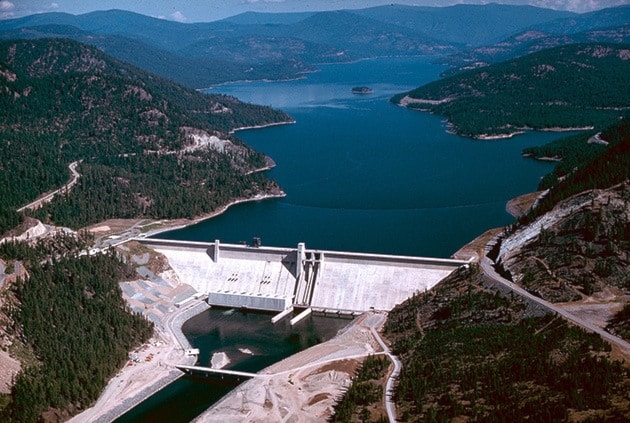What was looking like a strong snowpack earlier in March has given way to an early runoff due to warm temperatures in April, which will have an effect on water levels at Kootenay Lake and Lake Koocanusa.
Joel Fenolio, the Upper Columbia Senior Water Manager with the U.S. Army Corps of Engineers, said that Lake Koocanusa will likely be short of it’s preferred elevation of 2,454 feet by July 31st.
“we had above average snowpack through march, looking pretty healthy in terms of refill and operations throughout the spring and summer,” Fenolio said. “ And then April hit.
“Basically we lost our snowpack and we’re well below average in terms of snowpack. The latest round of storms has helped that, but we need it to continue through June in order for Lake Koocanusa to refill.”
Water levels at elevation 2,459 feet is considered full pool, and Fenolio is hoping that any potential precipitation in June can help the water supply get closer to that figure.
“But we need June precipitation,” Fenolio said. “Usually this [time of] year, we have some snow we can rely on that’s going to be coming off. It doesn’t look like we have that same situation that we’ve had in past years.”
The decreased snowpack throws a wrench into the plans of releasing water to help with sturgeon reproduction on the other side of the border.
Normally, there is what’s called a double-peak operation; where cold water is released earlier during the first peak to encourage migration and warmer water released during the second peak to encourage spawning, says Jason Flory, a biologist and White Sturgeon recovery team lead with the U.S. Fish and Wildlife Service.
“With the earlier warmer weather this year, we don’t have as much snowpack or water to work with,” said Flory. ”What we’ve done is condensing that down to a single peak and trying to extend that peak to 10 days.
“…right now, it looks like what we’re seeing from the data, it looks like we do have spawning fish in the river and upstream at Bonner’s Ferry. How many and what they’re doing up there, we don’t know yet, it’s still too early to say.”
The Kootenai Tribe of Idaho is also working with the Fish and Wildlife Service to modify some of the habitat along the Kootenay River to help the sturgeon with the spawning process, which has had some success in pilot projects and should be completed by 2017.
“It’s a multi-faceted project, there are kind of two schools of thought on what’s best for sturgeon recovery,” Flory continued. “Right now, they’re spawning downstream of Bonner’s Ferry, and the bottom of the river there is sand and silt, so when the eggs get fertilized, they drop down to the bottom, get buried and they die.
“Upstream of Bonner’s Ferry is kind of where the rock starts, so the one school of thought is we should fix the habitat where they’re spawning now; make it rocky and gravelly and the other school of thought is to change their behaviour, get them to move upstream, which we think they did historically before the dam.”
Over in Kootenay Lake, the situation will be likely the same Lake Koocanusa in regards to the low snowpack, said Peter McCann, Senior Engineer, Operations Planning with BC Hydro.
“We actually saw Kootenay Lake rise up quite quickly early on starting in March because of the snowpack and we were forecasting a fairly high reservoir level but looks like it’s going to struggle to reach 1748 feet this year,” McCann said.
